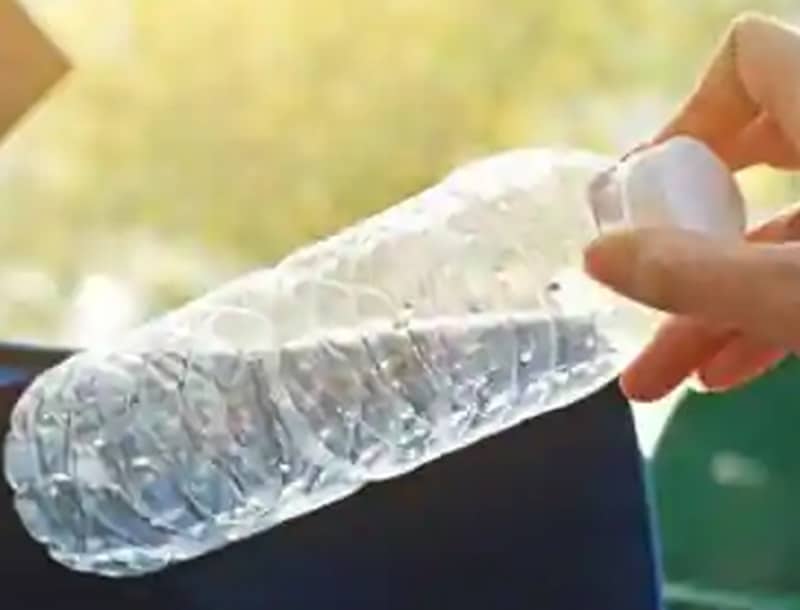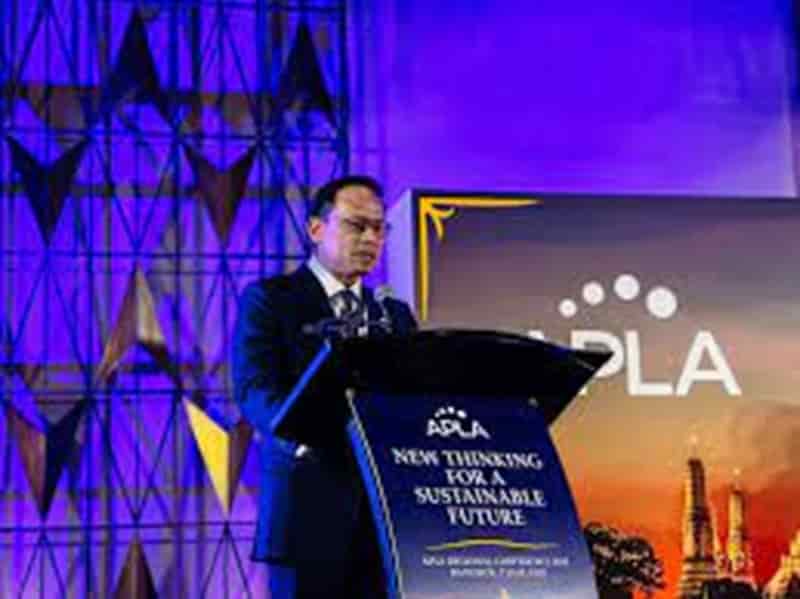More…
BMW showcases own battery to tackle Tesla
BMW starts making new battery cells that outperform Tesla’s BMW has begun producing its new Gen 6 battery cells, which will power its upcoming Neue Klasse electric vehicles.
The German car maker says its battery cells are better than Tesla’s in both performance and sustainability.
The Gen 6 battery cells are cylindrical and have a diameter of 46 mm. They come in two heights, 95 mm or 120 mm, depending on the capacity.
This shape helps to optimize the space and weight of the battery pack, which will be built into the vehicle structure. Recycled cellulosic-fibres
The Gen 6 battery cells will also have a voltage of 800 volts, which will enable faster charging and higher efficiency.
BMW claims its Gen 6 battery cells will provide a 30% increase in range over the previous generation, thanks to higher energy density and improved thermal management.
Moreover, the German company says it has cut CO2 emissions in cell production by 60%, using renewable energy and recycled materials.
The Bavarian company also plans to introduce solid-state batteries by 2030, which will further boost energy density by 20%.
The first cars to use Gen 6 battery cells will be the Neue Klasse models, which will launch in 2025. Recycled cellulosic-fibres
This is a new exclusive electric platform, which will include a compact sedan, a sporty SUV, a crossover and a station wagon.
BMW aims to sell more than 10 million electric vehicles by 2030, with a market share of 25%.

Japan: Scientists develop self-healing, stronger and partially biodegradable plastic
Scientists in Japan have developed a new version of plastic which is not just stronger and stretchier than the traditional version but also partially biodegradable. Besides, it can remember complex shapes which can be restored once it is heated.
Now, researchers at the University of Tokyo have successfully created “sustainable plastic,” which is based on an epoxy resin vitrimer. Recycled cellulosic-fibres
What are vitrimers?
Vitrimers represent a relatively recent category of plastics known for their impressive strength at low temperatures, while also possessing the unique ability to be reshaped numerous times when exposed to higher temperatures.
Nonetheless, they do have a notable drawback – extreme brittleness, as they cannot be stretched far before breaking.
To address this issue, researchers introduced a molecule called polyrotaxane into the plastic synthesis process, resulting in a novel plastic variant they’ve dubbed VPR, an abbreviation for “vitrimer incorporated with polyrotaxane.”
At lower temperatures, VPR’s robust internal chemical bonds maintain its rigid shape, but as temperatures rise, to around 150 degrees Celsius, these bonds start to recombine, allowing the material to take on different forms. Recycled cellulosic-fibres
Moreover, when heat and a solvent are applied to VPR, it readily breaks down into its constituent components. Submerging VPR in seawater for 30 days also led to a 25 per cent biodegradation, with the polyrotaxane breaking down into a potential food source for marine life.
Self-healing properties
“VPR is over five times as resistant to breaking as a typical epoxy resin vitrimer,” said Professor Shota Ando, a project research associate at the University of Tokyo Graduate School of Frontier Sciences.
“It also repairs itself 15 times as fast, can recover its original memorised shape twice as fast and can be chemically recycled 10 times as fast as the typical vitrimer.
It even biodegrades safely in a marine environment, which is new for this material,” Ando added. Recycled cellulosic-fibres
More…

High-purity rPET for new bottles
Croatia’s accession to the European Union has also given a significant boost to the topic of recycling, among other things.
Varisort sorting systems with FLASH technology for inspecting the bottle material for special colours (silver, opaq, TiO2 coloured) and for detecting bottles with a very low colour saturation. Recycled cellulosic-fibres
Since then, the aim has been to implement the EU’s waste directives and current targets and, above all, to drive forward the circular economy to a national level. The EU target of recycling more than 65 percent of the municipal waste generated by 2035 has paved the way for a sustainable circular economy.
Plastic packaging manufacturers as an active part of the circular economy
An example from the field of plastic packaging shows that especially the distributors and manufacturers of such packaging who see it as their duty to make their contribution to the circular economy and thus to environmental protection and resource conservation. The aim is to use recycled PET material in the production of PET beverage packaging and to continuously increase its share. When using recycled PET, purity is the decisive factor. Only pure and high-quality recyclate can be used for a wide range of new products and especially for beverage packaging. Recycled cellulosic-fibres
rPET pellets of the highest quality for use in the food sector
Austrian beverage producer Steinrieser and the newly founded Austrian-Croatian trading company for beverage production KIS pica have joined forces to set up a PET recycling plant in the Donja Dubrava region of Croatia to reprocess disposed plastic bottles.
The PET recycling plant REKIS produces up to 18,000 metric tons of high-quality rPET pellets annually, which is then reused for the production of beverage bottles. In Croatia, plastic bottles are collected via the existing deposit system, but also via municipal collection points. In addition, REKIS sources collected plastic bottles from Austria, Slovenia, Slovakia and the Czech Republic.
The material is delivered pressed into bales, separated and forwarded via an eddy current separator for separation from aluminium cans. To obtain pure PET material for use in the food sector from the plastic bottles processed in this way, a multi-stage sorting process follows. Recycled cellulosic-fibres
At REKIS, multisensor sorting systems from Sesotec are used to reliably separate plastic bottles and, in a further step, plastic flakes by type. This is the prerequisite for obtaining high-quality rPET pellets.
Presorting with Varisort+ multisensor sorting systems
In the first step, the bottles pass through the Varisort+ multisensor sorting system. Positive sorting of clear PET bottles takes place: PET plastic bottles and clear bottles are removed and sent to the next sorting stage. Unwanted plastic bottles are actively suppressed and were then sent to the return sorting stage with all other materials.
The advantage of this sorting process is that the target fraction is positively identified and collected. All other materials, such as stones, etc., are removed and no longer interfere with further processing. Recycled cellulosic-fibres
More…

APLA ’23: Brazil’s PE supply concerns rise as demand ticks higher
Brazil’s concerns about short supply of polyethylene (PE) in the fourth quarter continue mounting as imports could fall while demand is expected to rise slightly heading into this year’s annual meeting of the Latin America Petrochemical Association (APLA).
- Weather conditions could affect imports into Brazil
- Planned maintenance shutdowns to affect domestic supply
- Imports into Argentina heavily curtailed
Until August, PE supply was not a concern for the Brazilian chemicals market, but a drought in Brazil’s northern states has changed the scenario.
DROUGHT IN THE NORTH…
The inland Port of Manaus, in the state of Amazonas, is one of the main gateways for PE into Brazil; the region has large converters and is a free trade zone, making imports more competitive. Recycled cellulosic-fibres
However, the region has been struggling with a severe drought, causing the Port of Manaus – where the rivers Negro and Amazonas meet – to record its lowest water level in 121 years.
The Port recorded a water level of 13.59 metres in mid-October, the lowest level since records began in 1902 and well below the previous record lows of 2010.
Many shipping companies have ceased their services to the Amazonas state capital because, in some critical passage points, the water has reached a level that makes it impossible to continue maritime operations.
Many cargoes on board vessels bound for Manaus will have to be unloaded in other ports like Pecem and Vila do Conde, but it remains unclear when these cargoes will be re-embarked to Manaus. Recycled cellulosic-fibres
According to one distributor, this situation has caused many converters to transfer their production to plants located in other regions, thus generating an “artificial” demand for PE due to the impossibility of receiving imports in Manaus and shipping finished products from there to other regions.
Another source said this situation should only improve in Q1 2024, causing a large volume of backlogged cargo to land in Manaus next year, while a local converter said it expects the situation to improve in November.
More…

Berlin Packaging and APR partner to assess recyclability of PET bottles
The initiative will allow participating companies to receive the APR’s Design Recognition verification. Recycled cellulosic-fibres
Berlin Packaging has collaborated with US-based non-profit organisation the Association of Plastic Recyclers (APR) to introduce a sample bottle programme.
The programme aims to assist in the designing and testing of recyclable polyethylene terephthalate (PET) plastic packaging.
Berlin Packaging, a hybrid packaging solutions provider, is a member of the APR.
As part of this effort, Berlin Packaging is required to send small quantities of PET bottles to undergo recyclability test protocols at third-party testing laboratories to secure the APR’s Design for Recyclability Recognition. Recycled cellulosic-fibres
This guide is designed to help companies ensure that the design of their packaging is fully recyclable and can easily be converted into high-quality, post-consumer recycled content.
More…

Recycled cellulosic-fibres
Mechanically recycled plastic – Multiple mixed plastic polymers depolymerized by single catalyst in new scientific development 04-11-2023








